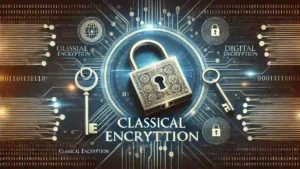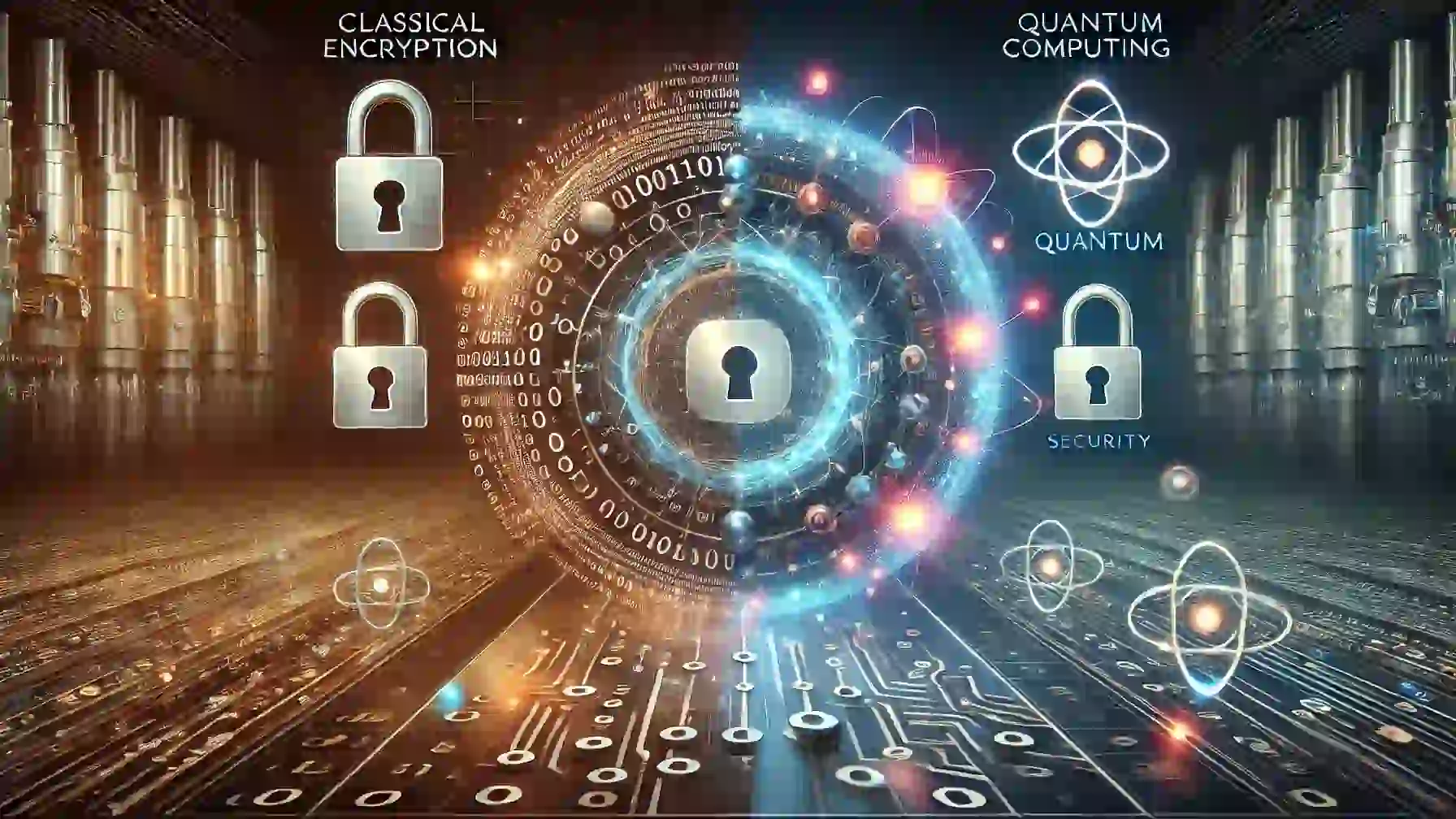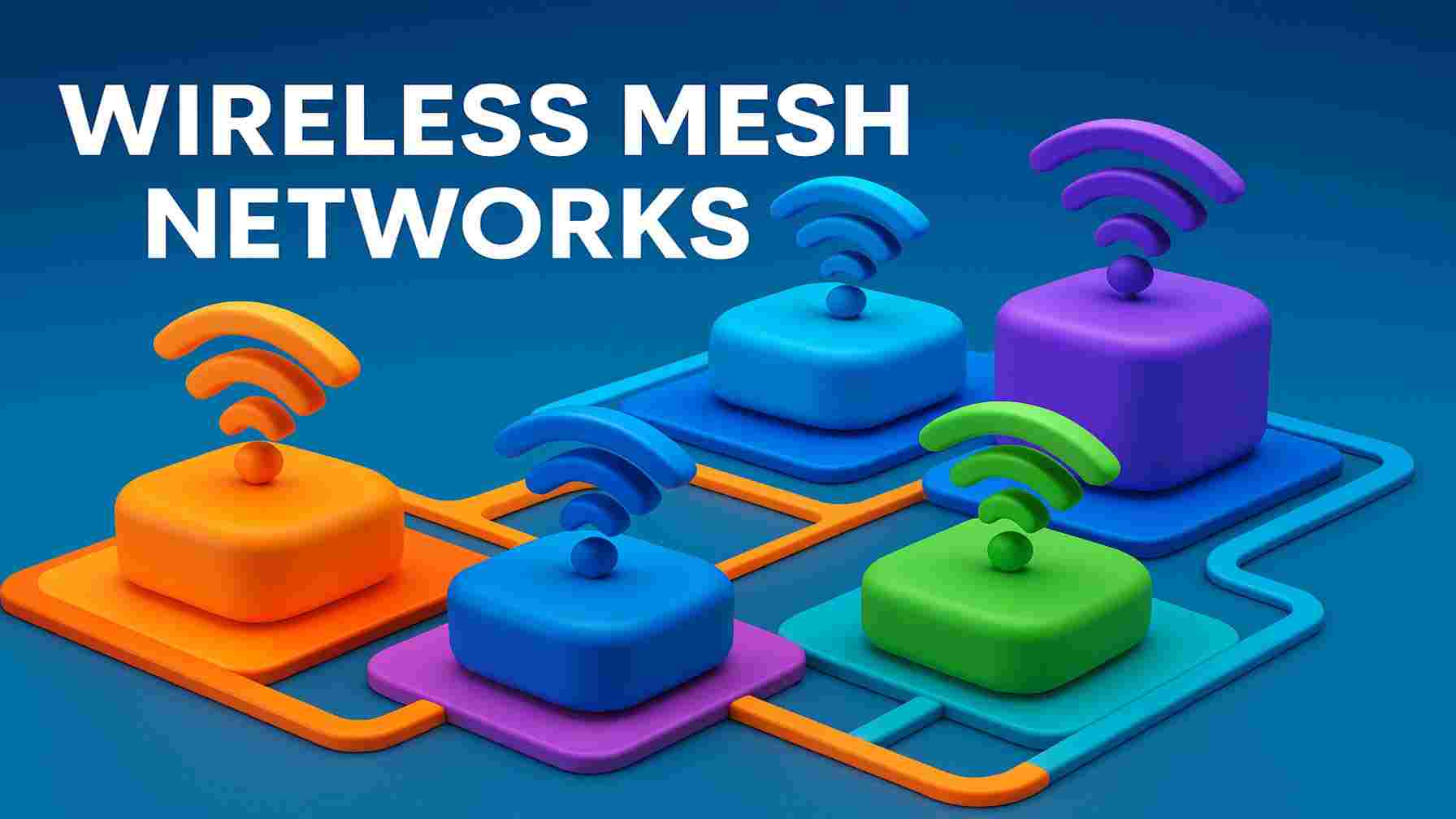Quantum computing is on the horizon. It promises to revolutionize technology, science, and industry in unprecedented ways. Among its many impacts, its effect on cybersecurity will be the most profound. As quantum computers grow more powerful, they could undermine current digital security foundations. This would expose vulnerabilities in encryption and threaten the integrity of sensitive data. This article explores the implications of quantum computing for digital security. It discusses potential risks and benefits and how organizations can prepare for this inevitable shift.
Understanding Quantum Computing: The Basics
To grasp the impact of quantum computing on security, it’s essential to understand what makes quantum computers different from classical computers. Classical computers, which power everything from smartphones to supercomputers, process information using bits that can be either 0 or 1. Quantum computers, on the other hand, use quantum bits or qubits, which can exist in multiple states simultaneously due to the principles of quantum mechanics, particularly superposition and entanglement.
Also Read: Quantum Computing: The Next Frontier in Technology
Superposition allows qubits to represent both 0 and 1 simultaneously. This exponentially increases the information they process compared to classical bits. Entanglement, another fundamental quantum property, allows qubits to be correlated with each other. The state of one qubit directly relates to the state of another, regardless of distance. This interconnectedness enables quantum computers to solve complex problems much faster. However, it poses a significant threat to current security mechanisms protecting our digital world.
Why Quantum Computing is a Game-Changer for Security?
The sheer computational power of quantum computers means they can tackle problems that would take classical computers centuries to solve. This capability is particularly concerning for cryptography, the science of securing information. Many of the cryptographic systems we use today, like RSA and Elliptic Curve Cryptography (ECC), are based on the difficulty of solving certain mathematical problems, such as factoring large prime numbers or computing discrete logarithms. Quantum computers, using algorithms like Shor’s algorithm, can solve these problems exponentially faster than classical computers, effectively rendering these cryptographic systems obsolete.
Current Cryptographic Methods and their Vulnerabilities:
Most digital security today relies on two main types of cryptography: symmetric and asymmetric.
-
Symmetric Cryptography: In symmetric encryption, the same key is used for both encryption and decryption. While symmetric algorithms like the Advanced Encryption Standard (AES) are relatively secure against quantum attacks, they are not immune. Quantum algorithms, like Grover’s algorithm, can reduce the time it takes to brute-force a symmetric key by half. This means that a 128-bit key, which is currently considered secure, would need to be extended to 256 bits to maintain the same level of security against quantum attacks.
-
Asymmetric Cryptography: Asymmetric cryptography, used in protocols like RSA and ECC, is far more vulnerable to quantum attacks. These systems rely on the difficulty of factoring large numbers or solving discrete logarithms, problems that quantum computers can solve in a matter of seconds using Shor’s algorithm. This makes the public-key infrastructure (PKI) that underpins much of today’s secure internet communications, including HTTPS and digital signatures, particularly at risk.
The Threat Landscape: How Quantum Computing Could Break Today’s Security
The potential threats of quantum computing to existing security systems are significant and wide-ranging:
-
Breaking RSA and ECC: Quantum computers could easily factor the large numbers that form the basis of RSA encryption, effectively breaking the security of any system that relies on RSA keys for encryption or authentication. ECC, which relies on the difficulty of solving discrete logarithm problems, is similarly vulnerable.
- Weakening Symmetric Encryption: While symmetric encryption is more resistant to quantum attacks, it is not invulnerable. Grover’s algorithm can reduce the security of symmetric systems, necessitating longer key lengths to maintain security.
-
Threats to Blockchain and Cryptocurrencies: Blockchain technologies, including cryptocurrencies like Bitcoin, rely on cryptographic principles to secure transactions and verify identities. Quantum computers could potentially disrupt these systems, leading to vulnerabilities in transaction verification and the security of digital wallets.
Post-Quantum Cryptography: The Future of Secure Communication
As the threat of quantum computing grows, researchers are creating new cryptographic algorithms. These algorithms are designed to be secure against quantum attacks. This emerging field is known as post-quantum cryptography. It aims to develop algorithms that can be implemented using classical computers. These algorithms are resistant to quantum computer attacks, ensuring stronger security in the future.
-
Lattice-Based Cryptography: This approach relies on the hardness of lattice problems, which are currently believed to be resistant to both classical and quantum attacks. Lattice-based cryptography is seen as one of the most promising candidates for post-quantum cryptography, offering both security and efficiency.
- Hash-Based Cryptography: Hash-based cryptographic methods, such as Merkle trees, provide security by using the properties of hash functions. They are particularly suited for digital signatures and have been known for their robustness against quantum attacks.
- Code-Based Cryptography: Code-based systems, like the McEliece cryptosystem, use the hardness of decoding random linear codes. These systems have been around for decades and are known for their high security levels, although they tend to require larger key sizes.
- Multivariate Polynomial Cryptography: This approach uses multivariate polynomials over finite fields. While not as widely adopted as lattice- or code-based cryptography, it represents another potential avenue for developing quantum-resistant algorithms.
-
Supersingular Isogeny-Based Cryptography: This newer approach involves the use of isogenies between supersingular elliptic curves. It offers compact key sizes and is gaining interest as a viable post-quantum alternative.
Quantum-Safe Encryption: Bridging the Gap
Quantum-safe encryption refers to encryption methods that can withstand attacks from both classical and quantum computers. Transitioning to these methods is crucial to protect sensitive information in the quantum era. Organizations are exploring hybrid systems that use a combination of classical and post-quantum algorithms to ensure security during the transition period.
-
Hybrid Cryptographic Systems: These systems use both traditional and post-quantum algorithms to provide a dual layer of security. This ensures that even if one system is compromised, the other remains secure, providing a safer path for transitioning to fully quantum-resistant cryptography.
-
Implementing Quantum-Safe Protocols: Organizations need to develop and implement quantum-safe protocols to replace vulnerable systems. This involves not only adopting new cryptographic standards but also updating hardware and software to support these new protocols.
Quantum Key Distribution (QKD): A New Frontier in Secure Communication
Quantum Key Distribution (QKD) is a method of securely sharing encryption keys using the principles of quantum mechanics. Unlike classical key distribution, QKD ensures that any attempt to eavesdrop on the key exchange will be detected, as the very act of observing the quantum state of a system alters that state.
-
How QKD Works: QKD involves two parties sharing a secret key by sending qubits through a quantum channel. If an eavesdropper tries to intercept the key, the quantum state of the qubits will change, alerting the parties to the presence of an intruder.
- Benefits and Limitations of QKD: QKD offers theoretically unbreakable security, as it is based on the laws of physics rather than computational complexity. However, it currently has limitations, including a limited range, high costs, and the need for specialized equipment.
-
Practical Applications of QKD: Despite these challenges, QKD is being tested and implemented in high-security environments, such as government communications and financial networks, where the highest levels of security are required.
The Challenges of Implementing Quantum Security:
Transitioning to quantum-safe systems presents several challenges, both technical and logistical:
-
Technical Barriers: Developing scalable, efficient, and secure quantum-safe algorithms is a complex task. Many of these algorithms require significant computational resources and larger key sizes than current systems, posing challenges for widespread adoption.
- Integration with Existing Systems: Many current systems rely on cryptographic standards that will need to be replaced or upgraded. This process is complex and costly, particularly for organizations with extensive legacy systems.
-
Cost and Resource Considerations: Implementing quantum-safe cryptography will require significant investment in new technologies, training, and infrastructure. For small and medium-sized enterprises, the cost may be prohibitive without government support or industry collaboration.
Quantum Computing for Cybersecurity Defense:
The Quantum computing isn’t just a threat; it also offers potential benefits for cybersecurity. Quantum algorithms can enhance security measures, improve threat detection, and provide new tools for testing and validating security systems.
-
Quantum Algorithms for Threat Detection: Quantum computers can analyze large datasets more efficiently than classical systems, potentially identifying security threats and anomalies that would go undetected by conventional methods.
- Quantum Simulation for Security Testing: Quantum simulation can model complex systems and interactions, allowing security professionals to test for vulnerabilities and anticipate potential attacks in ways that classical computers cannot.
-
Enhancing Encryption: Quantum algorithms can be used to develop new forms of encryption and authentication, providing more secure methods for protecting sensitive data.

Preparing for the Quantum Future: Timelines and Strategies
While fully functional quantum computers that can break current cryptographic systems are not yet a reality, experts predict that they could emerge within the next decade or two. Preparing for this eventuality is essential.
-
Current State of Quantum Computing: Companies like IBM, Google, and Microsoft are making significant strides in developing quantum hardware and software. However, many technical challenges remain, particularly in scaling quantum systems and maintaining qubit stability.
- Predictions for Quantum Breakthroughs: Most experts believe that it will take another 10-20 years for quantum computers to reach the point where they can break current cryptographic systems. However, this timeline could accelerate with new technological breakthroughs.
-
Developing a Quantum Security Roadmap: Organizations need to start preparing now by assessing their current security systems, identifying potential vulnerabilities, and developing a plan to transition to quantum-safe encryption. This roadmap should include timelines for implementing new technologies, training staff, and upgrading systems.
The Role of Governments and International Collaboration:
Governments have a critical role to play in driving quantum research and establishing security standards. National quantum initiatives and international cooperation will be essential to address the global nature of quantum threats.
-
National Quantum Initiatives: Countries like the United States, China, and the European Union are investing heavily in quantum research and development. These initiatives aim to position these countries as leaders in quantum technology and ensure their security systems are prepared for quantum threats.
- Policy and Regulation for Quantum Security: Governments are developing policies to guide the secure adoption of quantum technologies. This includes establishing standards for quantum-safe encryption, funding research into post-quantum cryptography, and promoting collaboration between public and private sectors.
-
International Cooperation and Standards: Quantum security is a global challenge that requires international cooperation. Organizations like the International Telecommunication Union (ITU) and the International Organization for Standardization (ISO) are working to develop global standards for quantum-safe cryptography and secure communication protocols.
Industry Applications of Quantum Security:
Quantum security will have significant implications for various industries, each of which will need to develop tailored strategies to protect against quantum threats.
-
Financial Services: The financial sector, which relies heavily on secure communications and transaction verification, is particularly vulnerable to quantum attacks. Quantum-safe encryption will be essential to protect sensitive financial data and prevent fraud.
- Healthcare and Pharmaceuticals: Protecting patient data and proprietary research from quantum threats is a top priority for the healthcare and pharmaceutical industries. Quantum-safe solutions will be needed to ensure the privacy and security of sensitive information.
-
Energy and Critical Infrastructure: The security of power grids, transportation systems, and other critical infrastructure is paramount. Quantum-safe encryption and QKD could provide the robust security needed to protect these systems from quantum threats.
Future Trends in Quantum Security:
The future of quantum security will be shaped by ongoing advances in both quantum computing and post-quantum cryptography.
- Advances in Quantum Hardware: As quantum hardware continues to improve, we will see more powerful and accessible quantum computers. This will increase the urgency for quantum-safe security solutions.
- Development of Quantum-Resistant Algorithms: Researchers are constantly developing and testing new cryptographic algorithms that can withstand quantum attacks. The success of these efforts will be critical to the future of secure communication.
-
Quantum Internet: The development of a quantum internet, where information is transmitted using quantum signals, could revolutionize secure communication. Such a network would offer unprecedented levels of security, as it would be immune to many forms of attack that threaten classical internet infrastructure.
How Organizations can prepare for Quantum Security?
Organizations should start preparing for quantum security now to ensure they are not caught off guard by the advent of quantum computing. Here are some steps to consider:
- Assess Current Vulnerabilities: Conduct a thorough audit of existing cryptographic systems to identify potential points of weakness that could be exploited by quantum attacks.
- Develop a Quantum Security Roadmap: Create a strategic plan for transitioning to quantum-safe encryption. This should include timelines, resource allocation, and milestones for implementing new security measures.
- Invest in Research and Development: Stay informed about the latest developments in quantum computing and post-quantum cryptography. Consider investing in research or partnering with academic institutions to explore new security solutions.
- Train and Educate Security Teams: Ensure that your security personnel are knowledgeable about quantum threats and the steps needed to mitigate them. Regular training and education will be essential as new technologies and threats emerge.
-
Collaborate with Industry and Government: Engage with industry groups and government agencies to stay up-to-date on emerging standards and best practices for quantum security. Collaboration will be key to developing effective strategies and solutions.
Conclusion:
Quantum computing represents both a significant threat and a tremendous opportunity for the future of cybersecurity. While the technology is still in its early stages, the potential for quantum computers to disrupt current security systems is real and imminent. Organizations, governments, and industries must proactively prepare for the quantum era by investing in research, adopting post-quantum cryptography, and developing comprehensive security roadmaps. By taking these steps, we can ensure that the digital world remains secure and resilient in the face of this transformative technology.
FAQs:
-
What is the biggest threat quantum computing poses to current security systems? The most significant threat is to public-key cryptography systems like RSA and ECC, which could be easily broken by quantum computers using Shor’s algorithm.
-
How long will it take for quantum computers to break existing cryptography? Estimates vary, but many experts believe that fully functional quantum computers capable of breaking current cryptographic systems could emerge within the next 10-20 years.
Also Read: Pager Blast Technology Threats and Security Concerns
- What is the difference between quantum-safe and post-quantum cryptography? Post-quantum cryptography refers to algorithms that are secure against quantum attacks, while quantum-safe generally refers to any security measure that protects against quantum threats, including quantum key distribution (QKD).
- Can quantum computing improve cybersecurity? Yes, quantum computing can enhance cybersecurity through advanced threat detection, quantum simulation, and new secure communication methods like QKD.
-
How can businesses start preparing for quantum security? Businesses should begin by assessing their current cryptographic systems, investing in research on post-quantum cryptography, and developing a comprehensive quantum security strategy.








